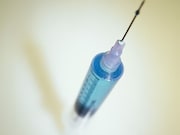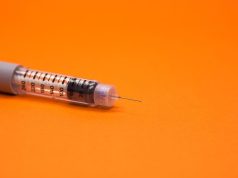2006-2016 Medicare claims show 10.2-fold, 7.2-fold hikes in pharmaceutical, out-of-pocket spending
TUESDAY, Aug. 27, 2019 (HealthDay News) — From 2006 to 2016, the prices of self-administered disease-modifying therapies (DMTs) for multiple sclerosis increased, according to a study published online Aug. 26 in JAMA Neurology.
Alvaro San-Juan-Rodriguez, Pharm.D., from the University of Pittsburgh, and colleagues used claims data from 2006 through 2016 for Medicare beneficiaries to assess trends in prices, market share, and spending on self-administered DMTs for multiple sclerosis.
The researchers found that from 2006 to 2016, the annual costs of treatment with self-administered DMTs for multiple sclerosis more than quadrupled, from a mean of $18,660 to $75,847 (mean annual increase, 12.8 percent). Across the study period, brand-name glatiramers accounted for the largest market share, ranging from 32.2 to 48.4 percent. From 2006 to 2016, there was a substantial drop in platform therapies in favor of newer therapies; decreases were seen in the market shares of brand-name glatiramers (from 36.7 to 32.2 percent), interferon beta-1a (30 µg: 32.3 to 14.2 percent), interferon beta-1b (18.7 to 4.5 percent), and interferon beta-1a (8.8/22/44 µg: 12.2 to 8.3 percent); increases were seen in fingolimod (to 7.9 percent), teriflunomide (to 9.0 percent), and dimethyl fumarate (to 19.2 percent). There was a 10.2-fold increase in pharmaceutical spending per 1,000 beneficiaries during the study period and a 7.2-fold increase in out-of-pocket patient spending.
“These findings suggest that market entry of new multiple sclerosis drugs may have contributed to higher drug prices among incumbent agents,” the authors write.
One author disclosed financial ties to Pfizer.
Copyright © 2019 HealthDay. All rights reserved.








